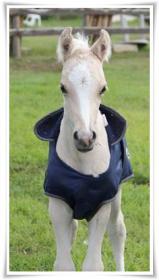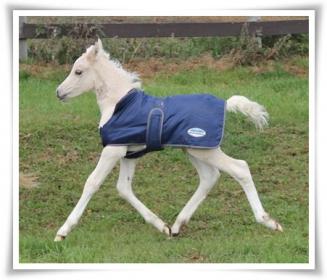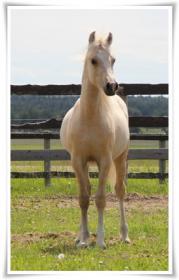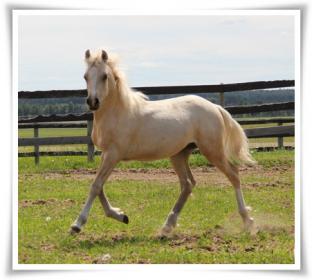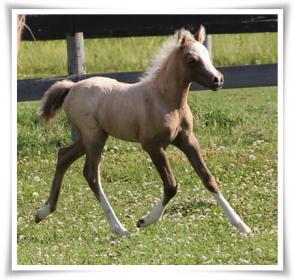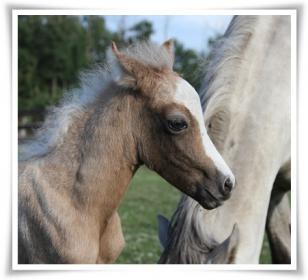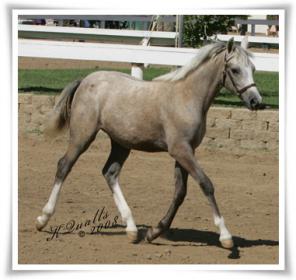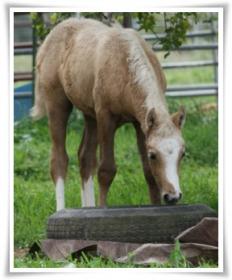We’ve bred lots of palominos over the years, many of them have turned grey. I’ve always known that if the foal was born their “adult color”, they would eventually turn grey. Foals born a light, washed out foal color will not turn grey and end up shedding out their foal coat to their bright adult color.
When this Welsh Pony colt was born last year, we knew he would stay palomino. He was born such a light, washed out color. Definitely not the typical adult color that would warrant the coat turning grey. He had not one single grey hair around his eyes or anywhere else.
Fast forward to this spring. I noticed a few white hairs throughout his coat. Figured it is either the result of his sabino markings…or he might be a palomino roan. Unfortunately, no test is available for roan. Because we are selling this colt this spring, I figured I better get a grey test done to rule it out just in case. I would hate to sell him to someone who dreamed of having a palomino pony hunter and then he ended up greying out. I was 99% sure the test would come back as non-grey, as he was not born looking like a grey colt.
I have no idea how the test came back as Gg, but it did! Will be sad to see such a gorgeous coat color disappear. Your thoughts JB? Wondering if there is a chance the test results are somehow wrong. 
